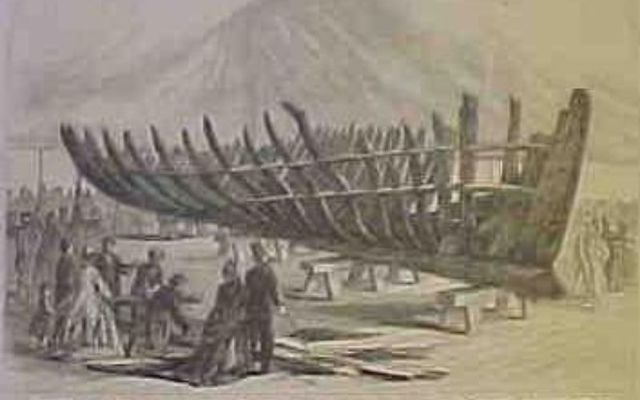A team of scientists in Massachusetts has examined the timbers of a famous shipwreck in an attempt to prove that the wood belonged to a 17th-century vessel that brought Irish indentured servants to America.
Plymouth’s Pilgrim Hall Museum investigated timbers from a shipwreck known as "the Sparrow-Hawk", which was uncovered in 1863 after a storm revealed the site of a former harbor in Orleans and Chatham.
Scientists at the museum are attempting to prove the long-held theory that the Sparrow-Hawk is the remains of a ship bound for Virginia in 1626, which ultimately brought the first documented Irish colonists to New England.
The ship ran into difficulties during a storm off Cape Cod and its passengers and crew were rescued by members of the Indigenous Nauset nation and taken to the newly-established Plimoth Colony.
The indentured servants spent almost a year in the colony before journeying to tobacco plantations in Virginia to fulfill their indentures.
Donna Curtin, executive director of the Pilgrim Hall Museum, told the Boston Globe that the 109 timbers of the Sparrow-Hawk shipwreck have been assembled into a skeletal hull on several occasions, while they have also been disassembled, measured, drawn, and exhibited.

Love Irish history? Share your favorite stories with other history buffs in the IrishCentral History Facebook group.
"One great question has haunted this assemblage of salt-worn timbers," Curtin told the publication. "Are they, in fact, from the same vessel described by William Bradford that brought the first documented Irish colonists to New England?"
Scientists at the museum have confirmed that the timbers belong to the oldest known shipwreck in Colonial English America, publishing their findings in the Journal of Archaeological Science on March 11.
Curtin said the museum hopes to "move beyond assumptions to the realm of the probability" by finding evidence that links the Sparrow-Hawk to the 1626 vessel.
The shipwreck provoked a "huge curiosity" when it was found in 1863 and was widely displayed across the region before it was acquired by the Pilgrim Hall in 1889.
The museum sent the timbers to a Cape Cod museum on loan before they were returned to the Pilgrim Hall in 2011 and placed in storage.
They remained there until four years ago, when Calvin Mires, a research associate of Woods Hole Oceanographic Institute, began to analyze them with new techniques developed in Europe.
A research team attempted to date the timbers and determine their origins and have greatly narrowed down the list of possibilities, although they have not been able to definitively link the timbers to the 1626 vessel.
The study found that the timbers came from England and date back to either the late 16th century or early 17th century.
The research team was also able to paint a picture of an older ship, measuring roughly 40 ft in length, which would have been somewhat unsuitable for an ocean crossing.
Curtin said the poor condition of the ship highlighted the desperation of some of Europe's working-class to improve their circumstances by embarking on a dangerous voyage to the new world.
The 1626 vessel bound for Virginia included two English merchants, farmers, and female indentured servants, with many coming from Ireland.
Curtin said the new research allowed the museum, which will open for the first time this year on April 1, to put the timbers on display in the future. Curtis said the museum would aim to create a portrait of the ship's passengers and study the impact of their time in Plymouth.




Comments